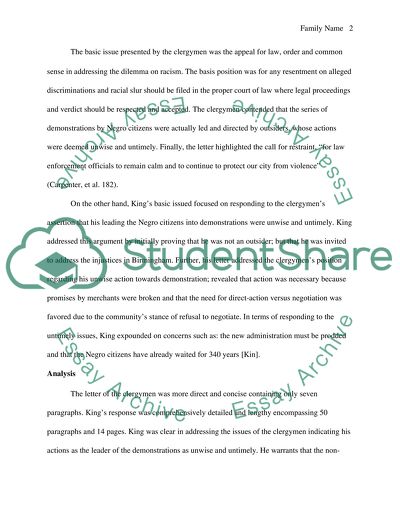Cite this document
(“A Letter From Eight White Clergymen and Letter from M. L. King, Jr Essay”, n.d.)
Retrieved from https://studentshare.org/english/1433802-letter-from-eight-white-clergymen-and-letter-from-birmingham-jail-by-martin-luther-king-jr
Retrieved from https://studentshare.org/english/1433802-letter-from-eight-white-clergymen-and-letter-from-birmingham-jail-by-martin-luther-king-jr
(A Letter From Eight White Clergymen and Letter from M. L. King, Jr Essay)
https://studentshare.org/english/1433802-letter-from-eight-white-clergymen-and-letter-from-birmingham-jail-by-martin-luther-king-jr.
https://studentshare.org/english/1433802-letter-from-eight-white-clergymen-and-letter-from-birmingham-jail-by-martin-luther-king-jr.
“A Letter From Eight White Clergymen and Letter from M. L. King, Jr Essay”, n.d. https://studentshare.org/english/1433802-letter-from-eight-white-clergymen-and-letter-from-birmingham-jail-by-martin-luther-king-jr.


